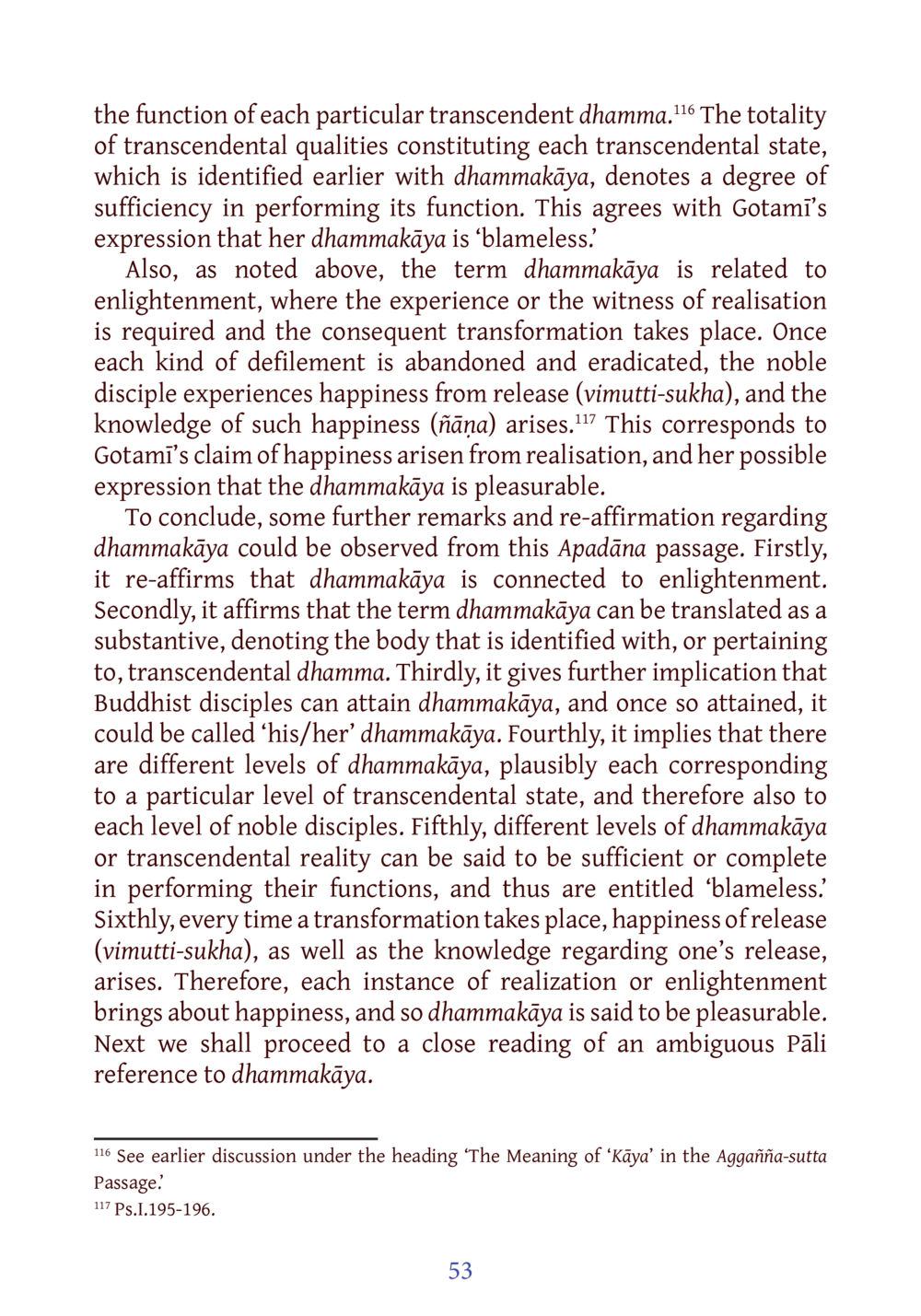Understanding Dhammakāya and Enlightenment : หน้า 74/141
DIRI Journal : หน้า 74/141 A deep exploration of the transcendental qualities of dhammakāya and its connection to enlightenment and happiness.
0 ครั้ง

สรุปเนื้อหา
This text analyses the concept of dhammakāya, highlighting its connection to enlightenment and the associated happiness. It emphasizes the blameless nature of dhammakāya and notes Gotami's insights into its pleasurable aspects. The document discusses the transformational journey of Buddhist disciples, outlining how the abandonment of defilements leads to a profound sense of release and knowledge. The text further clarifies the different levels of dhammakāya, suggesting that each level corresponds to varying degrees of transcendental reality and the attainment of noble disciples. Ultimately, the transformative experiences of realization bring happiness, reinforcing the idea that dhammakāya is aligned with pleasure and fulfillment in the spiritual journey. For more insights, visit dmc.tv.
หัวข้อประเด็น
-Dhammakāya and its functions
-Connection to enlightenment
-Transformation and happiness
-Levels of dhammakāya
-The role of noble disciples
-Defilement and release
ข้อความต้นฉบับในหน้า
หน้าหนังสือทั้งหมด













































































































































